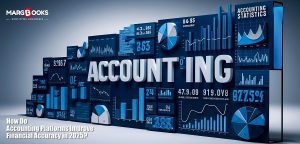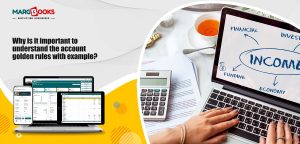In the world of business and finance, understanding financial statements is essential for making informed decisions. Among these documents, the balance sheet holds a prominent place. But what is a balance sheet, and why is it so important? This beginner-friendly guide will break down the concept, explain its components, and show how tools like accounting software, billing software, and platforms like Margbooks can simplify its preparation.
Understanding the Basics: What is a Balance Sheet?
A balance sheet is one of the core financial statements used to assess a company’s financial health. It provides a snapshot of a business’s assets, liabilities, and equity at a specific point in time. Often referred to as a “statement of financial position,” the balance sheet offers valuable insights into how well a company is managing its resources and obligations.
The fundamental equation of a balance sheet is:
Assets = Liabilities + Equity
This equation ensures that the resources owned by the business (assets) are funded either by debts (liabilities) or by the owner’s investment (equity).
Components of a Balance Sheet
A balance sheet is divided into three main sections:
1. Assets
Assets represent everything the company owns that has value. They are classified into two categories:
- Current Assets: These are assets that can be converted into cash within a year, such as:
- Cash and cash equivalents
- Accounts receivable
- Inventory
- Non-Current Assets: These are long-term assets that are not easily liquidated, such as:
- Property, plant, and equipment (PP&E)
- Intangible assets (e.g., patents, trademarks)
- Long-term investments
2. Liabilities
Liabilities are the obligations or debts the company owes to others. Like assets, they are also classified into two categories:
- Current Liabilities: These are obligations due within a year, including:
- Accounts payable
- Short-term loans
- Accrued expenses
- Non-Current Liabilities: These are long-term obligations, such as:
- Bonds payable
- Long-term loans
- Deferred tax liabilities
3. Equity
Equity represents the owners’ claim on the company’s assets after all liabilities have been paid off. It includes:
- Common stock
- Retained earnings
- Additional paid-in capital
Why is a Balance Sheet Important?
A balance sheet provides key information to various stakeholders:
- Business Owners: Understand the financial health and evaluate the company’s net worth.
- Investors: Assess the company’s financial stability and growth potential.
- Creditors: Determine the company’s ability to repay loans and meet obligations.
By analysing a balance sheet, one can identify trends, evaluate liquidity, and assess the effectiveness of financial management.
How to Create a Balance Sheet
Preparing a balance sheet may seem daunting, but with the right tools, it becomes manageable. Here’s a step-by-step process:
- List All Assets: Categorise them into current and non-current assets.
- Record Liabilities: Split them into current and non-current liabilities.
- Calculate Equity: Add up common stock, retained earnings, and other components.
- Verify the Equation: Ensure that Assets = Liabilities + Equity.
Simplify Balance Sheet Preparation with Technology
Modern tools like accounting software, billing software, and Margbooks have revolutionised the way businesses manage their finances. Here’s how they can help:
Role of Accounting Software
- Automatically track and record financial transactions.
- Generate accurate financial statements, including balance sheets.
- Provide real-time insights into the company’s financial position.
Role of Billing Software
- Streamline invoicing and payment processes.
- Maintain accurate records of accounts receivable and payable.
- Integrate with accounting software for seamless data flow.
Role of Margbooks
- A comprehensive platform tailored for Indian businesses to manage accounting and billing.
- Offers user-friendly features for generating balance sheets, profit and loss statements, and GST reports.
- Integrates seamlessly with other financial tools to ensure accurate and efficient financial management.
By leveraging these tools, even small businesses can ensure their financial statements are accurate and up-to-date.
Tips for Analysing a Balance Sheet
Understanding a balance sheet goes beyond just preparing it. Here are some tips to analyse it effectively:
- Assess Liquidity: Compare current assets to current liabilities to evaluate the company’s ability to meet short-term obligations.
- Examine Debt Levels: High liabilities compared to assets could indicate financial risk.
- Review Equity Growth: Consistent growth in equity reflects a healthy financial performance.
Conclusion
So, what is a balance sheet? It is more than just a financial document; it is a comprehensive tool that provides critical insights into a business’s financial health. By understanding its components and leveraging modern accounting software, billing software, and platforms like Margbooks, businesses can not only prepare accurate balance sheets but also use them to make informed decisions.
Whether you’re a budding entrepreneur or an established business owner, mastering the balance sheet is a step towards financial clarity and success. Start using advanced tools today to simplify your financial management and focus on growing your business!




